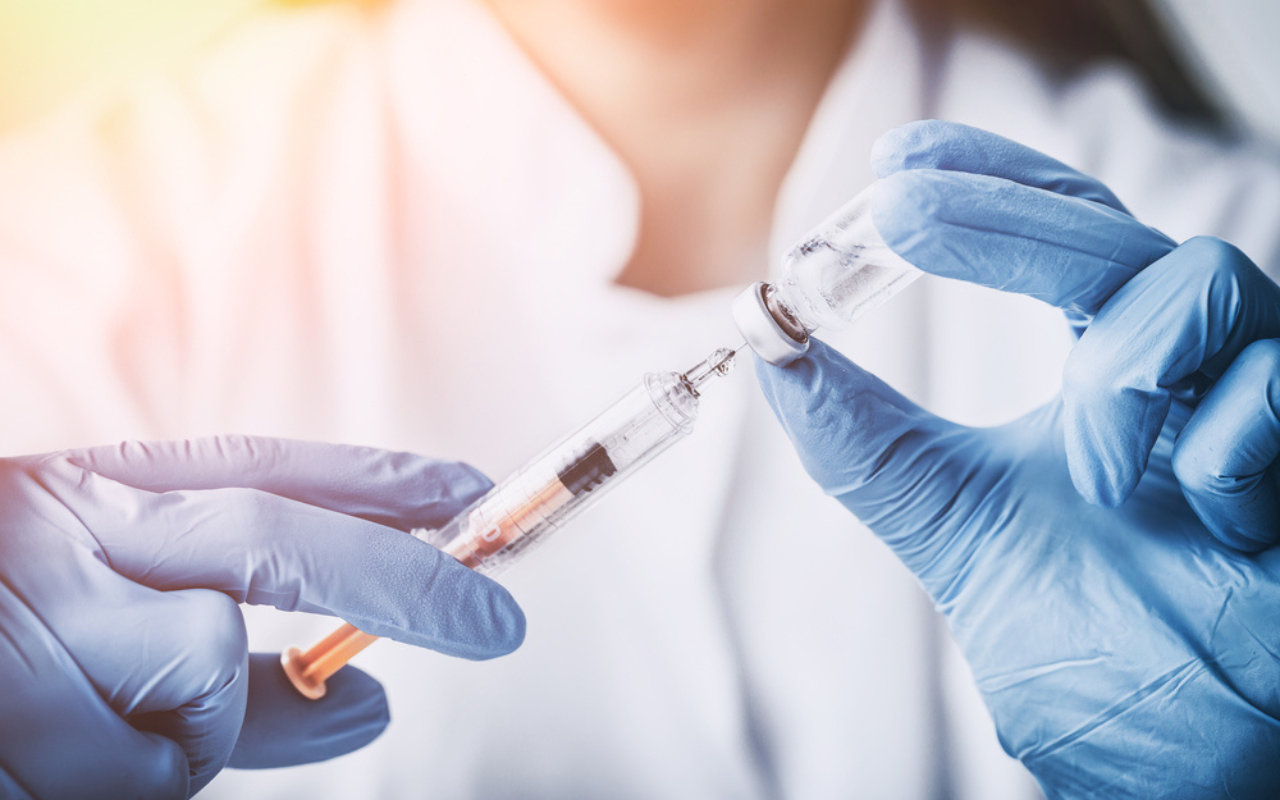COVID vaccines have unquestionably made a huge difference during this pandemic. For example, it’s estimated COVID shots have saved more than 1.4 million lives in the World Health Organization’s (WHO) European region alone since their introduction in December 2020.
Unfortunately, SARS-CoV-2 (the virus that causes COVID) has continued to change quite quickly, and this affects how well immunity generated from both vaccination and past infection protects us. This issue is often referred to as “immune evasion”.
One strategy to address this has been to update our vaccines, and we’ve done this four times already in Australia. Now, the Therapeutic Goods Administration (TGA) is considering what would be the fifth iteration of a COVID vaccine – a shot targeting the JN.1 omicron subvariant.
Here’s what you need to know about these updated boosters.

Keeping up with the COVID variants
Our initial vaccines targeted the original strain of SARS-CoV-2. The first update still included the original strain but added an early omicron subvariant BA.1. We then changed BA.1 to BA.4/5 with the original strain.
The most recent update occurred in late 2023 when we reverted to having just one component in the vaccine, in this case the omicron subvariant XBB.1.5.
The virus has continued to change. Another subvariant of omicron, JN.1, was first detected in August 2023 and went on to drive a significant wave of infections in Australia over summer.
JN.1 subsequently gave away to other subvariants you may know as the “FLiRT” and “FLuQE” variants which have seen a relatively large increase in COVID activity over recent months. FLuQE, or KP.3, is currently dominant.
Although JN.1 is no longer driving many cases, given FLiRT and FLuQE are descended from JN.1, vaccines targeting JN.1 should do a good job at protecting against these newer subvariants.
What’s the process?
As far back as April, the WHO recommended the use of vaccines targeting the JN.1 lineage based on the expectation the virus would continue to evolve from JN.1. The European Medicines Agency made the same recommendation.
Potentially from when it became clear that JN.1 was going to become dominant, but certainly from this point, pharmaceutical companies would have started working on tweaking their vaccines accordingly.
When these vaccines are ready and have been tested, they apply to the relevant regulatory bodies for approval.
The United States Food and Drug Administration (FDA) has recently approved an emergency use authorisation for a Novavax vaccine targeting JN.1.
Meanwhile, the regulator in the United Kingdom has approved the JN.1-specific Spikevax from Moderna and Comirnaty from Pfizer.
In Australia, our process differs slightly and tends to take a little longer. The TGA’s website indicates applications for two JN.1 vaccines are currently under evaluation (Spikevax and Comirnaty). We won’t know when they’re going to be approved until the decision has been made, but hopefully this is not too far away.
The US has also approved KP.2 vaccines
In June, the FDA advised vaccine manufacturers to update their COVID vaccines to target JN.1. But subsequently it recommended it would be preferable for vaccines to target the KP.2 strain instead (FLiRT).
Moderna and Pfizer said they would be able to develop vaccines targeted to KP.2 and the FDA has since granted emergency use authorisation for these two companies’ KP.2 vaccines.
It seems likely the difference between a JN.1 booster and KP.2 booster will be minimal. Both should provide significantly updated protection against currently circulating subvariants compared with the XBB vaccines. So we shouldn’t feel as though we’re missing out by not having plans for KP.2 boosters in Australia at the moment.
Are the new vaccines safe and effective?
Before approving updated boosters, regulators carefully review data looking at immune responses generated by the new vaccines against the newer variants, compared to previous vaccines.
Based on data mostly generated by the vaccine manufacturers, the updated JN.1 vaccines appear to lead to substantially improved immune responses against multiple related sublineages including KP.2 and KP.3, compared to the XBB vaccines.
These recent updates are not expected to change the well-established safety profile of the COVID vaccines. But as always, the vaccines’ safety (as well as efficacy) will continue to be monitored even after they’re approved and rolled out.
What about Novavax?
The COVID vaccines from Pfizer and Moderna are mRNA vaccines. These work by giving our body instructions to make SARS-CoV-2 spike proteins (proteins on the surface of the virus which it uses to attach to our cells). Then when we encounter SARS-CoV-2, our immune system is ready to respond.
The Novavax shot is an adjuvanted protein-based vaccine, which means the proteins are manufactured in a lab and a component called an adjuvant is added to improve the body’s immune response. Vaccines using this type of technology have been around for some time so it’s considered a more traditional way of making a vaccine.
While our mRNA options work well, there are some people who can’t have or don’t want an mRNA vaccine, so Novavax provides an important alternative option.
However, the updated Novavax booster does not yet seem to have an application before the TGA, so is likely to be some time away for us in Australia.
Some challenges remain
While it’s great we have been able to update our vaccines successfully, it would be ideal if we could develop vaccines that don’t need to be updated as often.
But perhaps the biggest determinant of how well a vaccine works is its uptake, and at the moment the uptake of COVID boosters is well below where it needs to be.
For example, as of August, only 31.8% of people aged 75 and older had received a COVID vaccine in the previous six months (it’s recommended every six months in this age group).
We also need to look at ways to approve updated COVID vaccines more quickly and efficiently in this country, including non-mRNA options.
Paul Griffin is a professor of infectious diseases and microbiology at The University of Queensland.
This article is republished from The Conversation under a Creative Commons license. Read the original article.
The statements or opinions expressed in this article reflect the views of the authors and do not necessarily represent the official policy of the AMA, the MJA or InSight+ unless so stated.
Subscribe to the free InSight+ weekly newsletter here. It is available to all readers, not just registered medical practitioners.
If you would like to submit an article for consideration, send a Word version to mjainsight-editor@ampco.com.au.

 more_vert
more_vert
I had a severe reaction to Pfizer heart pains, vertigo, tinnitus, balance issues, severe migraines, I thought I was dying so opted for Moderna why can’t we get novavax like other countries ?
I am one of those people who can’t have another mRNA vaccine. Following adverse reactions to Astra Zeneca when the Pfizer vaccine became available I jumped at the chance to have one. 48 hrs later I was admitted to hospital suffering from a Takotsubo event (symptoms the same as a heart attack). Fortunately after about three months my heart had returned to normal. My cardiologist advised against having another mRNA vaccine so I opted for Novavax. Success, I had absolutely no side effects and because of my poor respiratory history I continued to have a Novavax booster every six months until it was withdrawn. I am in my early 70’s and hate to think what will happen if I get Covid. My last booster was in November 2023.
I had such a severe reaction to Pfizer why can’t we get novavax ? It’s so unfair especially for immuno compromised people already struggling day to day come on Australia up your game 🤬
We are waiting for Novavax booster. Hopefully it gets approved in the near future.
I only want a Novavax booster, hope it becomes available
Novavax traditional protein based vaccine and its updates have demonstrated long term superior efficacy and less side effects than MRNA from real published world data from many countries. Giving citizens choices and providing accurate guidance are fundamental responsibilities of any Govt. Big Pharma lobby leverages money to corrupt this process in their favor and hide behind exclusive contracts. Will democracy continue to allow such harm to Public Health?
The Novavax is probably the best vaccine in both efficacy and low side effects. Unfortunately it seems the Australian government doesn’t want to pay Novavax for the vaccines it already ordered since it has too many mRNA doses anyway.
So, the government found a brilliant solution. It doesn’t approve Novavax so Novavax can’t be sold and the government doesn’t need to pay. First, its a dirty trick. This is not a legitimate way. Second, many citizens suffer and can’t use the mRNA vaccines. Many will get infected and some will die. What government is it that prevents medical aid from its citizens?